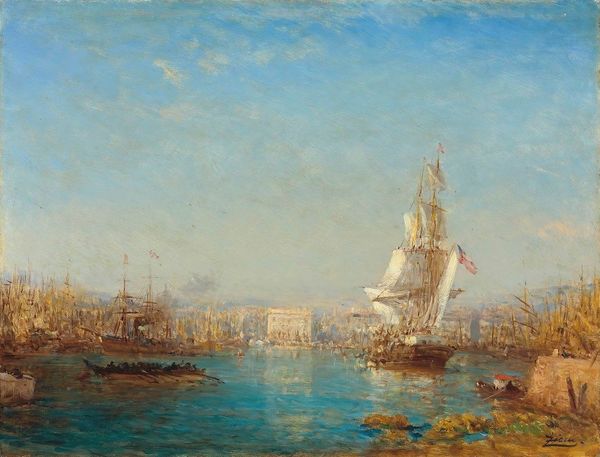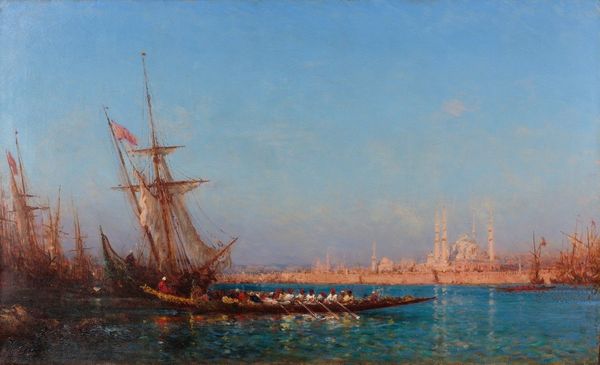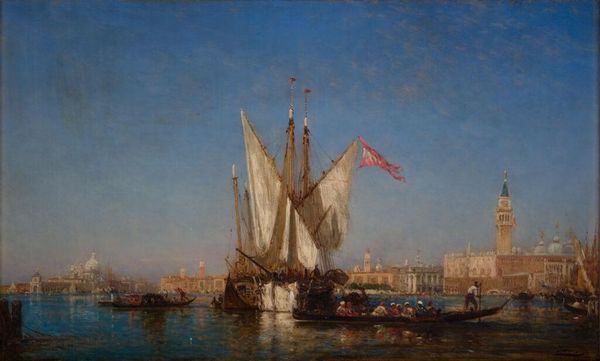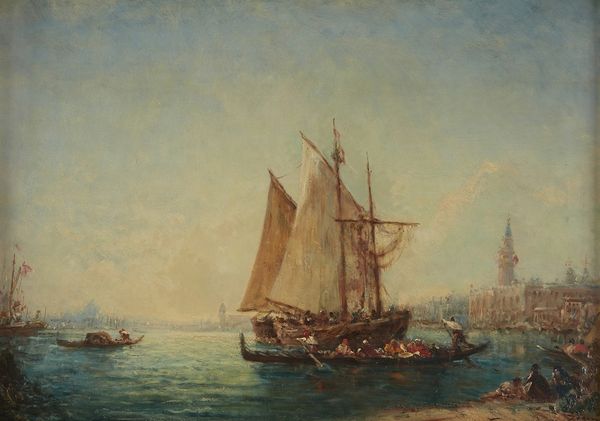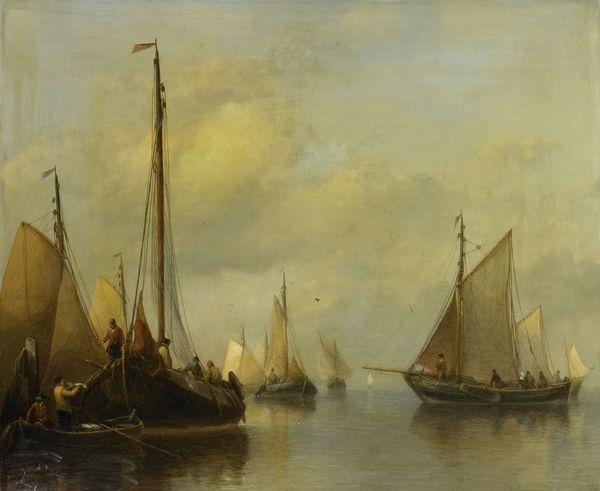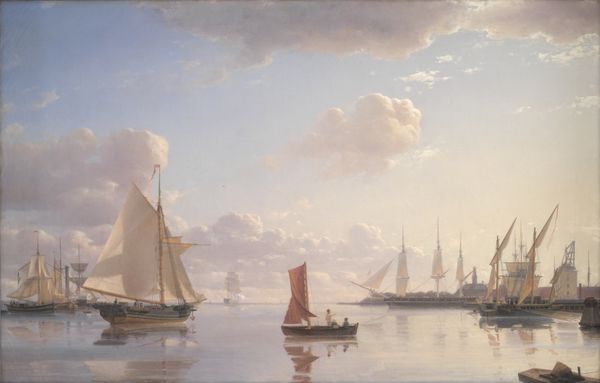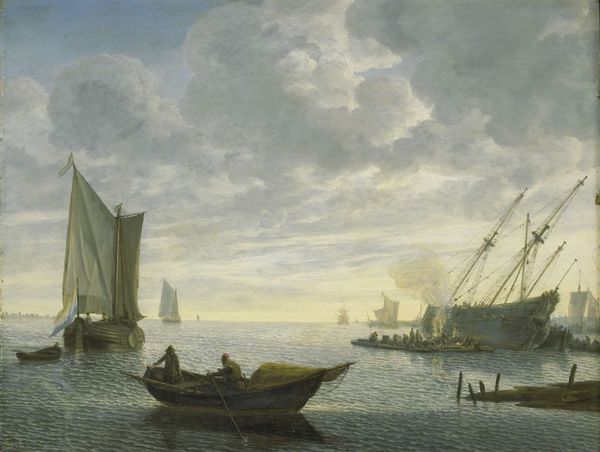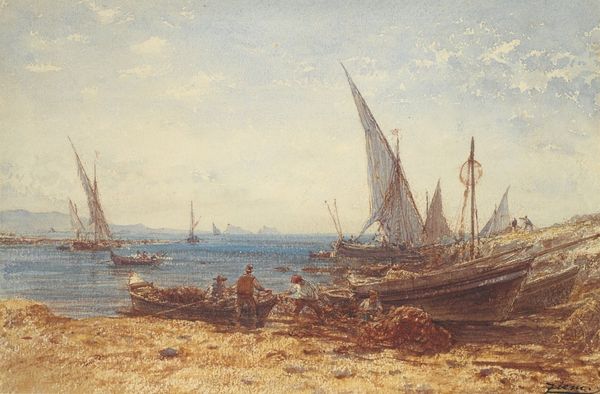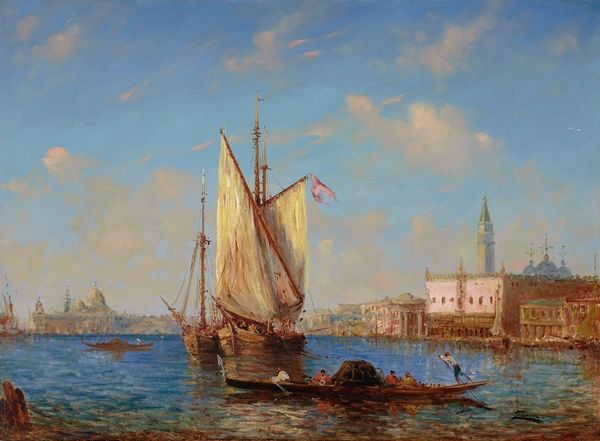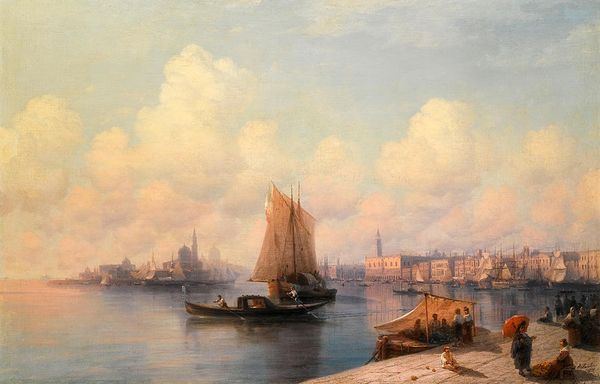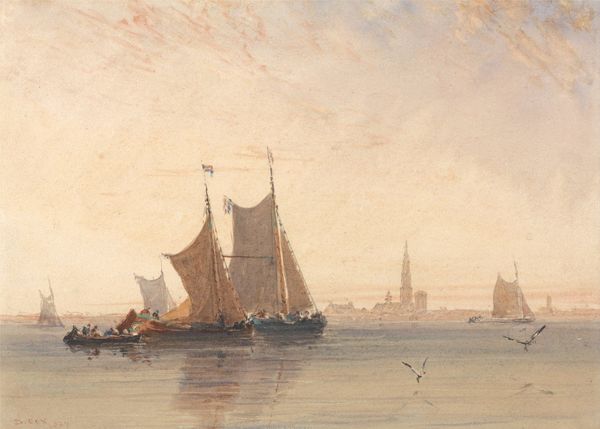
painting, oil-paint
#
painting
#
oil-paint
#
landscape
#
impressionist landscape
#
oil painting
#
romanticism
#
orientalism
#
cityscape
Copyright: Public Domain: Artvee
Curator: Ah, here we have a view of “Le Bosphore,” by Félix Ziem. Though it's undated, Ziem frequently visited and painted scenes of Constantinople—now Istanbul. Editor: Immediately, it strikes me as dreamlike. That soft, almost hazy light really romanticizes the whole scene. It's lovely but does that dissipate its ties to the hard work this cityscape required to sustain it? Curator: You see labor where I see light. I like that! Perhaps it’s both? Look at the variety of boats, from the grand sailing ships to the smaller rowboat carrying passengers. It captures a port bustling with exchange and journeying. Ziem renders the canvas with such swift, fluid brushstrokes in oil-paint. The way the water shimmers is just magical, like crushed jewels. Editor: That shimmering quality you mention, the perceived magic, depends very concretely on access to certain pigments and materials. These came from somewhere—were traded, manufactured, mined… that boat we see contains the labor and social strata you describe. Who built those ships? What materials were available and who controlled their exchange? Curator: An interesting observation. And looking closely, it’s not photorealistic—details are suggested, not precisely rendered. Maybe it's about capturing the spirit of the place, more than its literal appearance. Like remembering a vibrant dream of travel. The colours evoke the Orient with amber-tinged architecture glowing along the shoreline! Editor: You know, seeing this, I also wonder about Ziem’s own position as a Western artist depicting an Eastern subject. We shouldn’t ignore the historical power dynamics embedded in orientalism, even as we appreciate the artistic skill in this piece. He is re-shaping an external gaze. The pigment’s materiality carries both artistic merit but also material consequence in social contexts. Curator: So well said! And in my appreciation for its colours, brushstrokes, composition…perhaps the challenge is appreciating art’s sensory elements with an awareness of that wider socio-historical context, wouldn't you agree? It reminds me of holding a handful of sand and letting it flow into the water—fleeting and eternal. Editor: Indeed. Analyzing an artwork through process, labor, or from a place of material history is another path toward an expansive understanding. One that, for me at least, grounds the ethereal qualities.
Comments
No comments
Be the first to comment and join the conversation on the ultimate creative platform.
